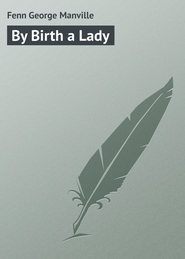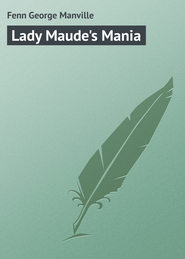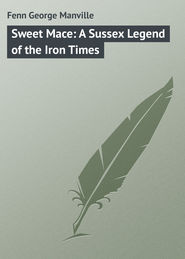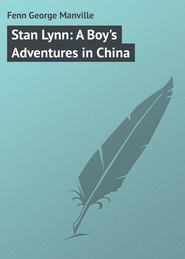По всем вопросам обращайтесь на: info@litportal.ru
(©) 2003-2025.
✖
The Khedive's Country
Настройки чтения
Размер шрифта
Высота строк
Поля
There are two distinct breeds of buffalo utilised in this country – the productions of Upper and Lower Egypt, those from the latter district being reckoned the better.
In this portion of the farm and around the buildings fruit trees were plentiful, diversifying the scene and adding greatly to its attractiveness, and looking novel to a visitor from Europe, who saw an abundant growth of the Seville or bitter orange, and the cool, greeny-grey picturesque olive of Southern Europe and the East.
Among other fruit trees seen here were some bearing long pods, called chiar shambar by the natives. The fruit of these trees, which is long and green, but which turns black soon after picking, seemed at a distance like a huge bean, suggesting that the fruit was akin to the carob or locust bean, this idea being emphasised by the sweet glutinous pulp in which the seeds were buried. This pulp is pleasant to the taste, but slightly bitter, and is largely used by the natives boiled up with water, as a drink on account of its medicinal qualities.
Taken all in all, the visit to the Khedive’s farm was most attractive, and pregnant with proofs of the fertility of the well-tended land, for on every side were examples of the successful culture of many of the agricultural products treated of in detail from the notes of the student-like superintendent, who has all in his charge.
The place, as before said, may be regarded as a model and example of what can be done with land that has been looked upon for ages as so much desert, when all that was required was industry, application, and the ingenuity necessary for extending the action of the Nile flood. Nature has always been ready to do the rest.
The Khedive has another tract of farm land, which he purchased some time back, about two kilometres from the estate just described, at Koubbeh. This is Mostorod, where he has a simple-looking villa. On the way here one of the first things that attract the attention of an Englishman is that home-like contrivance so often missing in foreign countries – a hedge dividing the fields from the roadway and separating them from each other. These were unknown before the time of Abbas Helmi the Second, and what may be done in time to come in the surroundings of farms by means of the simple, well cut back hawthorn remains to be proved. Here the shrubby growth, chosen for its neat form and comparatively rapid development, is the bitter orange.
At Mostorod many of the surroundings are marked by the energetic proceedings of the practical farmer. Here steam is at work, like the patient slave it is, forming the motive power in one case for raising water for all farming purposes, in another setting in action the mills, which rapidly turn out and clean the meal ground from wheat and Indian corn.
Buildings are here containing the various grains and seeds; others are the storehouses for one or other of the three pickings produced in the cultivation of cotton; and at the entrance of every building, just inside the door, there is a pitch pine wood frame, with its glass covering, and a paper on which is a record of the amount and nature of whatever is brought in or taken out of the building in the shape of corn, cotton, seed, or whatever may be stored.
Here, in opposition to much that is modern, there is a large, old-fashioned Egyptian stable, very thick of wall. The building is divided into two chambers, connected and lit from overhead, the light coming through the roof of wood and rafters thickly thatched with reeds.
These rafters are supported by thick round columns formed of the ancient, sun-dried brick for which Egypt has long been famed. Near by something of the old-world fashion of the place was visible in a typical grinding mill such as may be seen in common use in pretty well every village. It had a chamber to itself, and differed little from those which might have been seen in England fifty or a hundred years ago, set in action by an often blindfolded horse, but here worked by a bullock.
Ornamentation is not wanting at Mostorod, for the villa has its garden brightened by fruit trees, and the pillar-stemmed palms, with their leafy crowns, are frequent objects in the transparent, sunny air.
Close at hand is the village on the Khedivial estate. In it the streets are narrow and the houses of one height, thoroughly waterproof, and of the familiar construction, of sun-dried bricks covered with white plaster, and, being of an earlier date in the improvement the Khedive is striving for in the poorer class dwellings, not to be compared with the spick and span new houses he has lately had erected at Mariout, not far from Alexandria.
Hard by this village is a very large barn or stack yard with more native pigeon houses, the whole of the surroundings being extremely quaint and picturesque.
Again, a short distance onward stands the native village of Mostorod, with its attractive little mosque and a tomb erected to the memory of a saint.
The Ismailia Canal supplies water to the Koubbeh and Mostorod estates, and in this neighbourhood is a good deal of very valuable agricultural land, some portions of which are let to the fellaheen for three months in a year, so as to enable them to grow a crop of maize.
Hereabouts, tethered in the clover fields, a herd of the Khedive’s camels are pastured, many of these being bred for carrying purposes, others (the slighter of build) for riding and speed. The scene is attractive from its verdure, but comparatively treeless, though it is worthy of mention that two solitary weeping willows do their best to adorn the landscape – a plain with the suggestions of home in the shape of lapwings, or birds bearing a very strong resemblance, which fly up here and there.
This estate is close to Heliopolis – the ancient On – where almost the only suggestions of the City of the Sun are the sunshine and a great square piece of white stone, bearing hieroglyphs, and in perfect preservation, while in the distance stands up in solitary state the far-famed Obelisk.
Chapter Three
“Words, words, words!” quoth Hamlet, and the reader of this sketch of the possibilities in the way of cultivation offered by the Khedive’s dominions may be disposed to contemptuously say the same. But in the following pages it is proposed to give proof of what may be done in an ordinary way by one who is gardener for pleasure and health, supplier of ordinary produce to the market, or farmer upon a larger scale, without looking for a moment upon the vast increase that is bound to follow the wider and wider distribution of that life of such a land – abundant water, not merely for irrigation, but in this case charged year by year with the rich fertilising mud of the vast equatorial regions regularly borne down by the Nile in flood.
Among the first questions an intending settler might ask respecting the country that he intends to make his temporary or future home would naturally be, “What is the place like? What sort of seasons are they?”
Egypt is a country which may be said to be blessed with four seasons. There is that which begins in July with the inundation of the Nile, when for about two months the whole country of the Delta may be likened to a vast lake dotted with islands represented by the towns and villages. Naturally, then, the air is moist, and mornings and evenings have their mists. In the second season, answering to our winter and early spring, we have cold nights; but the days are hot, and the vegetation is rapid and luxuriant. The third, corresponding to our spring, is the least attractive; while the fourth, which continues until the rising of the Nile, is in the highest degree delightful.
Everyone has praised the Egyptian nights – cloudless skies, an intensely bright moon, so bright that at harvest time, for reasons in connection with the shedding of the grain, it is the custom amongst the farmers and cultivators of the soil to take advantage of the coolness and light to commence garnering their crops at midnight. So bright is the moon in this extraordinarily clear atmosphere that the peasantry who sleep in the open air are careful to shade their eyes from the rays, which are often said to produce a more painful effect than those of the sun.
These pages contain the experience of long years of patient study of the cultivation of Egypt, of that carried on by the native, who for ages past has looked to the soil for his sustenance. And of his practical knowledge, that which is valuable has been adopted; while experiment, experience, and the effects of modern cultivation have run with it side by side.
Every gardener and farmer knows, however enlightened he may be and fond of the modern ways of doing things, that it is not wise to look slightingly upon old-fashioned customs. Experientia docet is a well-known maxim, and the experience taught often by generations of disappointments is worthy of all respect.
Men go on cultivating and growing certain things which excite the contempt of a stranger, but too often he lives to learn that there was good reason for the practice, hence, animated by the spirit of respect for the old, while striving to introduce the new and improved, the notes and descriptions herein contained may be depended upon as being thoroughly practical and well worthy the attention of every cultivator who has at heart the future of the Delta and the higher irrigated lands of Egypt.
Further, it may be presumed that every reader is fully acquainted with the fact that lower Egypt possesses a climate without extreme variations of temperature; that winter is hardly known but as a name; and that, though changes have taken place of late years, probably from increased cultivation and planting, the rainfall is extremely small. And yet the fertility of Egypt is proverbial, and due to this annual flooding of the lands by the Nile, which – after the fashion, already referred to, of the northern midlands of England, where so many acres have been flooded and drained after a lengthened deposit of mud, or “warp,” as it is termed – become rich in the extreme. The warping in Yorkshire and Lincolnshire is an artificial and protracted process, carried out once only; the warping of the land of Egypt is natural, and repeated year by year; while as soon as the water has run off, the coating of mud, rich in all the qualities of fertility, is ready to bear, after the merest scratching of the soil, its abundant one, two, or even three crops in a year.
Here are possibilities, then, for the cultivator who is ready to bring to bear all the appliances of modern science, the discoveries of practical agricultural chemistry, and, above all, the mechanical and ingenious inventions so admirable in a flat, open country, unbroken by hedge or tree.
Among the minor objects familiar to the tourist in his journey up the Nile are the various means of raising water for the irrigation of the crops. These have been, and still continue to be in many places extremely primitive, for, as before stated, the fellaheen in their conservative fashion are prone to cling to the inventions of their forefathers. Hence they may still be seen laboriously at work with their shadoofs, sakiehs, and other water-wheels worked by hand or mule power, raising the fertilising fluid to a sufficient height to be discharged and flow of itself, spreading over the patches of land requiring irrigation.
But these clumsy contrivances are giving place in the newly-reclaimed and cultivated parts of the Delta to modern machinery, urged by motive power, notably by steam, though to a great extent advantage is taken of the wind; for it is a common thing to see in the landscape the circular disc-like object, as noted at a distance, formed by a windmill with its many fans, or “vans,” standing at the edge of some canal or by one of the many wells that have been dug upon the higher grounds.
For though tract after tract may be desert, presenting nothing but coarse growth and sand ready to drift before the wind, there is not much difficulty in finding water, notably in the wide plateau known as Mariout, spreading out in the direction of the Libyan Desert from Alexandria. Here the sinking of wells results in the finding of water at depths varying from twenty to forty feet, and boring to a greater depth would doubtless produce a fuller supply, for in so flat and porous a land, within easy measurable distance of the great inland sea, there is every probability that an inexhaustible supply is within touch. And nowadays the various ingenious contrivances of the mechanical engineer are always ready, and at small cost, to supplement during the dry times the abundant supply offered by the great river. Of course, this deals solely with the higher grounds that are not reached without mechanical help by the dam-supplied network of canals that already veins the country, and projects for the increase of which are, since the opening of the great works at Assiout and Assouan, either under consideration, or already planned.
The slow, clumsy hand labour of the shadoof and the awkward cattle-worked sakieh, or earthen pot surrounded water-wheel, is now being superseded in the larger tracts of cultivation by such ingenious pieces of mechanism as the centrifugal pump, worked by steam, and so contrived that it can be utilised on the bank of river or canal, and with a suction tube turned down at any angle, so that it can be lowered into any of the common wells that are sunk in all directions. The portable steam engine used in connection therewith is one of the grandest slaves of civilisation, playing its part on the large farms for traction, threshing, straw chopping, or other of the many necessities of cultivation. By means of these centrifugal pumps after the middle of November on large estates the water has to be forced into the service (estate) canals.
A ten-horse power engine, driving a ten-inch pump, will irrigate the same number of acres in twelve hours, lifting the water five feet, the cost of raising water being two shillings per acre. The small occupiers of land sometimes raise their supply from wells and canals by means of Persian wheels or Archimedean screws.
Chapter Four
At Cairo when the Nile commences its annual rise, for the first few days its tint seems to be green; but the general tone during the inundation is of a dirty red, of course due to its being thickened with the mud brought down from the south. During this rising, irrigation can be sent freely flowing over all cultivated lands, as the river continues about the level of the banks till the middle of November.
In simple language, irrigation means the turning of desert into richly fertile producing land. A great deal has been said and done, but everything points to the fact that, however great and productive a garden Egypt has been for countless years, it is still almost, as it were, in its infancy. The erection of that stupendous piece of engineering, the Assouan Dam, has already had effects that have surpassed the expectations of its projectors; and writing upon this subject, Sir William Willcocks, a gentleman whose knowledge of the position is of the highest value, points out a series of facts that are almost startling in their suggestions. He draws attention to the fact that there are still two million acres of excellent land waiting to be reclaimed after the simple fashion herein described, and then requiring to be irrigated to the full extent needed – that is to say, perennially.
These are large figures to deal with, but Egypt is a vast country, and its powers of production almost beyond belief; but everything is bound up in the one need – water supply; and it is this furnishing of life to plants, and enabling them to find it latent, as it were, in the far-spreading plains that are as yet but sand and dust, that is taking the attention of our great engineers.
Here they find room to exert their powers. It is only a year ago that we had the inauguration of the first great stride; and now we are told that the thirsty country asks for more. To fully carry out the perennial irrigation that shall fertilise the two million acres still waiting, “the country requires one milliard of cubic metres of water per five hundred thousand acres” – that is to say, four times that quantity. At the present time, with the height to which it has been already erected, the Assouan Dam holds up and supplies one milliard of these cubic metres of water in all, a sufficiency for five hundred thousand acres of agricultural and garden land. It is proposed to raise it twenty-one feet higher, with the result that its holding powers will be so vastly increased that the supply will be doubled, and hence be sufficient for another five hundred thousand acres. But even then there will be a milliard acres still waiting for a supply of water to the extent of two milliards of cubic metres of water for themselves. Whence is this supply to come?
The engineers are ready with their answer, and only ask for the capital, not to float some mad scheme, but to spread bounteously the rich water which turns, as above said, the desert into fertile land.
The plan, or project, is to form a huge reservoir in the Wady Rayan, which will with ease supply the water needed at a cost of about two million pounds – a large sum of money, but ridiculously small in comparison with the results. There is, however, a drawback in connection with this reservoir – a weakness, so to speak, which alone would render its value questionable, for while in April and May, during the flood time, its supply would be enormous, it would fall off very much in June, and furnish but very little in July.
But now in connection therewith we find the truth of the old proverbial saying, “Co-operation is strength.” Alone it would be weak, but if made now and worked in connection with the Assouan Reservoir it becomes strong, and the two being tapped in turn as the need arose, the combination would have tremendous results, one reservoir so helping the other that sufficient water could be depended upon to keep up a perennial supply.
To give Sir William Willcocks’ words:
Let us now imagine that both reservoirs are full of water, and it is April 1st. The Wady Rayan Reservoir will be opened on to the Nile and give all the water needed in that month, while the Assouan Reservoir will be maintained at its full level. In May the Wady Rayan Reservoir will give nearly the whole supply, and the Assouan Reservoir will give a little. In June the Wady Rayan Reservoir will give a small part of the supply, and the Assouan Reservoir will give the greater part. In July the Wady Rayan Reservoir will give nothing, and the Assouan Reservoir will give the whole supply required. Working together in this harmonious and beautiful manner, these reservoirs, which are the true complements of each other will easily provide the whole of the water needed for Egypt.
Now, this raising of the Assouan Dam to the height proposed means an expenditure of five hundred thousand pounds, and the time for the completion of this addition and raising of the works two years, at the end of which period, as we have seen, its power for irrigation will be doubled; while to make the additional reservoir, and enable it to discharge its vast extra supply at the cost named, will take three years; four years will then be required to bring the water to its proper height – seven years in all; so that in that time full arrangements can be made for the perennial irrigation of the whole of Egypt.
Huge sums of money these to spend or put into the soil, two millions and a half sterling; but let us see what there is to be said on the credit side.
Take one point alone. The increase in the cotton crop of Egypt would be most extensive, and its value enormous. Then there is the land itself. Here we have so many extra acres, only partially irrigated, but which by this raising of the supply of water will be changed from partial supply land into constant – that is, each acre will be enabled to tap the reservoirs at all times of the year, according to the cultivator’s need, with the consequent rise in value of the land of thirty pounds per feddan, or acre; and that means, according to Sir William Willcocks, an increase in the wealth of Egypt to the extent of sixty million pounds.
From one bold stroke! Sixty million pounds for the expenditure of five. Not bad, this, for the engineers. But still, it is but the beginning of what may be done in the Khedive’s country, for it is full of suggestions to be carried out by an enterprising people for the making of the native and those of our own country who are prepared to look far ahead. The amount of land to be reclaimed is enormous; and what land! For countless ages the Nile has flowed down, bringing with it its fertile mud, depositing some by the way, carrying other some out to sea, to be lost in the depths of the Mediterranean; but still, as time rolled on, adding to, and raising higher, the huge Delta through which the various mouths made their way; so that in these lowest portions of Egypt the depth of rich soil must be enormous.
Here lie the lakes and canals of olden formation, shallowed and choked with mud, and rendered almost impassable for transit, but only waiting for the engineers to contrive modern works, the result of survey and level, feeding canals and the forming of reservoirs to supply irrigation water for freeing the land of its salt, making easy the navigation of the district, and simplifying the conveyance of its grain and other crops.
All this development is awaiting enterprise and capital low down in the Delta. But the engineers have not stopped near home and the Khedive’s capital; they have cast their eyes afar across that vast extent of barbarism, the re-conquered Soudan, where, bordering upon the Nile, it is often “water, water everywhere, and not a drop” for the crops to drink.
Sir William Garstin has been busy here, surveying and examining what can be done towards and beyond Khartoum. Here rich tracts of fertile land are lying on both sides of the Blue Nile, to the extent, roughly speaking, of some three millions of acres. This land of Upper Egypt is as rich in its capabilities as that of the Delta; but it has qualities which the latter does not possess, and is more suitable for the production of excellent cotton, which can be sown as a flood crop and reaped in winter, an advantage which the seasons will not permit in Egypt.
Here, again, then, is an opening for enterprise and capital in the future, for it must not be forgotten that the Suakin-Berber Railway, well in progress, opens up this part of the country, one which some of these days will be brought well in touch with Liverpool and the northern manufacturing towns, as the cotton-growing capabilities of Upper Egypt extend.











